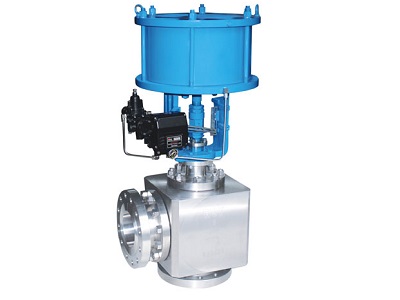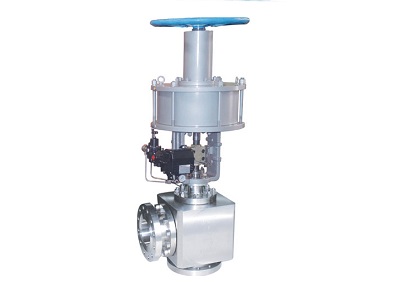In the production process automation adjustment system, the control valve is an important and indispensable link, which is called the "hands and feet" of the production process automation, and is one of the terminal control components of the automatic control system.

The angle control valve is composed of the actuator and the valve. From a hydraulic point of view, the regulating valve is a throttling element whose local resistance can be changed. The regulating valve changes the resistance coefficient by changing the stroke according to the input signal, so as to achieve the purpose of regulating the flow.

1. The structure of the angle control valve
Except that the valve body is an angle type, the other structure of the angle control valve is similar to that of the single seat valve. Its characteristics determine that its flow path is simple and the resistance is small, which is especially beneficial for high pressure drop, high viscosity, containing suspended solids and particulate matter. Fluid regulation. It can avoid the occurrence of coking, sticking and clogging, and is also easy to clean and self-clean.
2. Comparison of forward and reverse use of angle control valve
Under normal circumstances, angle control valves are installed in the forward direction, that is, the bottom enters and the side exits. Only in the case of high pressure difference and high viscosity, easy coking, medium containing suspended particles, it is recommended to install in reverse, that is, the material side enters and the bottom exits. The purpose of the reverse use of the angle control valve is to improve the unbalanced force and reduce the wear on the valve core.
Analysis of reverse use of angle control valve
It is understood that in the acetaldehyde plant introduced by Jilin Chemical Industry Co., Ltd. from West Germany, the pv-23404 angle control valve is recommended to be used in reverse under the process conditions of high pressure drop. During the water linkage test, the angle-type regulating valve oscillated strongly and made a harsh noise, and the spool broke after 4 hours of test. At that time, foreign experts believed that the quality of the valve core was not good. The author believes that it is not a quality problem, but due to unreasonable use. The reasons for its fracture are analyzed below.
We know that at present, except for butterfly valves and diaphragm valves, which are completely symmetrical in structure, all other structures of regulating valves are asymmetrical. When the regulating valve changes the flow direction, the value of ) changes due to the change of the flow path. The normal flow direction of all kinds of regulating valves is the direction in which the spool is opened (forward use), and the manufacturer only provides the flow capacity in the normal flow direction) and flow characteristics. When the regulating valve is used in reverse, that is, when the fluid flows in the direction of closing the spool, the flow capacity of the regulating valve will increase. During the water linkage test, the simulated process conditions cannot quickly reach the normal state, and the regulating valve is used in a small opening state for a long time, which will cause serious instability due to the effect of unbalanced force. Therefore, the regulating valve will generate strong vibration and make a harsh noise, which will cause the valve core to break quickly. Under normal process conditions, the opening degree of the regulating valve is moderate, and even a small opening degree is short-lived, so the regulating valve can be used normally and safely.
in conclusion
Under normal circumstances, the reverse use of the angle control valve is not recommended. It is recommended to use the reverse direction only in the case of high pressure difference, high viscosity, easy coking and medium containing suspended particles. When using it in reverse, it should be avoided to run with a small opening for a long time, especially during the test run.
 WENZHOU WEITUO VALVE CO., LTD.
WENZHOU WEITUO VALVE CO., LTD.